Results of restoring headlights
Table of Contents
Introduction
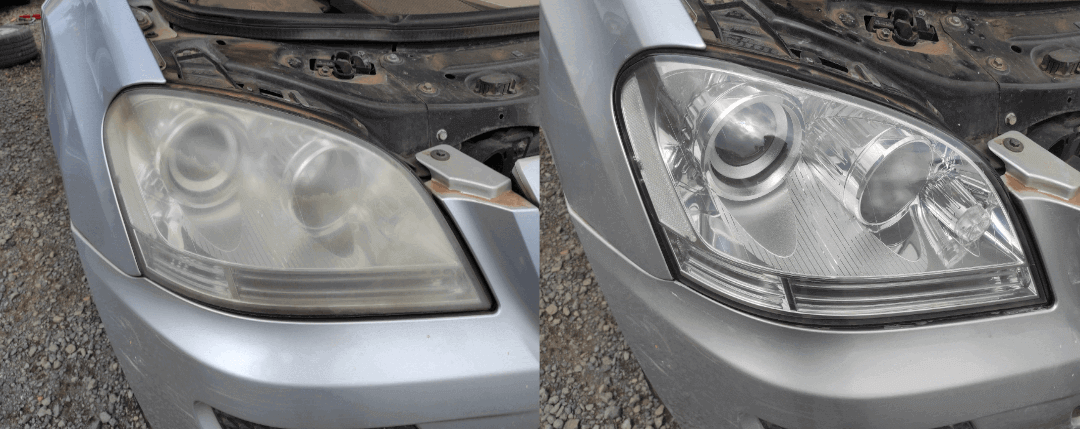
Headlights are an essential component of any vehicle, providing visibility and safety during nighttime and adverse weather conditions. However, over time, headlights can become dull, hazy, or yellowed, diminishing their effectiveness and compromising your safety on the road. This is where headlight restoration comes in. By restoring clarity and rejuvenating the appearance of your headlights, you can enhance both the aesthetics and functionality of your vehicle.
In this article, we will delve into the world of headlight restoration before and after, exploring the importance of restoring your headlights, the process involved, and the transformative results it can achieve. Whether you choose a do-it-yourself approach or seek professional assistance, understanding the benefits and steps of headlight restoration will empower you to make informed decisions and ensure safer journeys.
So, let’s embark on a journey to bring back the shine to your headlights and discover the remarkable difference it can make in restoring clarity and safety to your driving experience.
Understanding Headlight Degradation
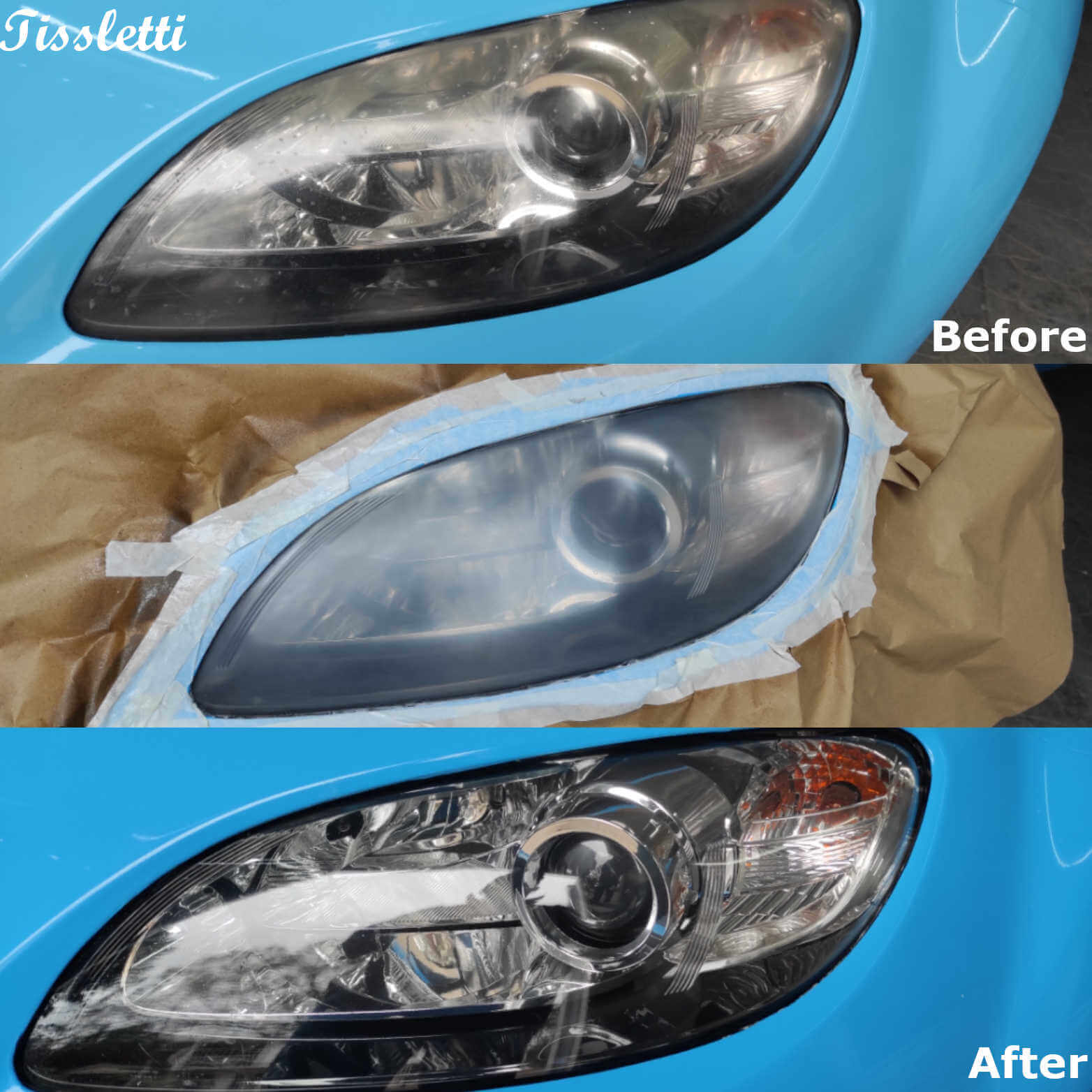
Headlights play a crucial role in ensuring visibility and safety while driving, but over time, they can undergo degradation that affects their performance. Understanding the causes and effects of headlight degradation is essential for recognizing the importance of restoration and taking proactive measures to maintain optimal visibility on the road.
Causes of Headlight Degradation
- UV Exposure: One of the primary culprits behind headlight degradation is prolonged exposure to ultraviolet (UV) radiation from the sun. UV rays can break down the protective outer layer of the headlight, causing it to become cloudy, yellowed, or hazy.
- Oxidation: The headlight lenses are typically made of polycarbonate material, which is vulnerable to oxidation. Over time, exposure to air and moisture can lead to the formation of a thin layer of oxidation on the lens surface, resulting in a dull and faded appearance.
- Environmental Factors: Harsh weather conditions, such as extreme heat, cold, rain, and snow, can accelerate headlight degradation. Additionally, road debris, chemicals, and pollutants can contribute to the deterioration of the headlight’s clarity and performance.
Effects of Headlight Degradation
- Diminished Visibility: When headlights degrade, their ability to emit a bright and focused beam of light decreases. This can significantly reduce visibility, especially at night or in adverse weather conditions. Dim headlights make it challenging to see the road ahead, potential obstacles, and other vehicles, compromising the safety of both the driver and other road users.
- Reduced Safety: Poor visibility not only affects the driver’s ability to see but also makes the vehicle less visible to others on the road. Faded or cloudy headlights can make it difficult for other drivers to notice your vehicle, increasing the risk of accidents, particularly in low-light situations or when changing lanes.
- Aesthetic Concerns: In addition to the safety implications, degraded headlights can negatively impact the overall appearance of the vehicle. Cloudy or yellowed headlights can make a car look older and poorly maintained, diminishing its visual appeal.
By understanding the causes and effects of headlight degradation, you can appreciate the importance of addressing this issue promptly. In the following sections, we will explore the headlight restoration process and the remarkable transformations it can achieve, both in terms of appearance and safety.
Importance of Headlight Restoration
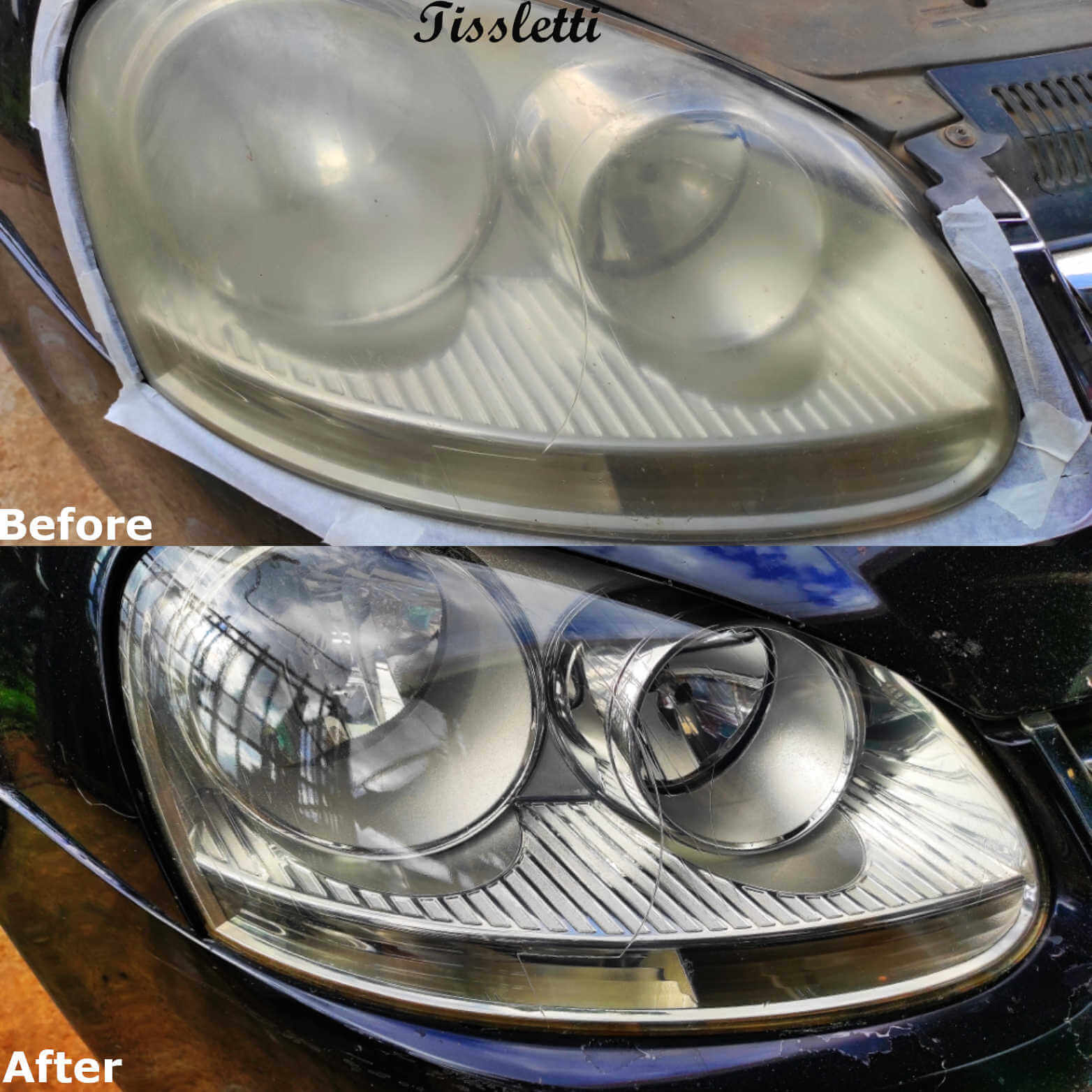
Properly functioning headlights are essential for a safe and pleasant driving experience. However, over time, headlights can become dull, hazy, or yellow due to various factors. This section will highlight the importance of headlight restoration in enhancing visibility and road safety, improving the vehicle’s aesthetics, and providing a cost-effective alternative to headlight replacement.
Enhancing Visibility and Road Safety
- Improved Light Output: Headlight restoration involves the removal of oxidation, grime, and other contaminants from the headlight lenses, allowing the headlights to emit a brighter and clearer beam of light. Restored headlights provide better illumination on the road, enhancing visibility during nighttime driving or adverse weather conditions.
- Restored Clarity: Cloudy or yellowed headlights can scatter light, causing a diffused and less focused beam. Through restoration, the clarity of the headlight lenses is restored, ensuring a more precise and concentrated light projection. This enables drivers to see the road ahead more clearly, identify potential hazards, and react promptly, thus reducing the risk of accidents.
Improving the Aesthetics of the Vehicle
- Youthful Appearance: Faded, hazy headlights can make a vehicle look worn-out and aged. Headlight restoration can reverse the effects of degradation, bringing back the shine and transparency of the lenses. This transformation not only improves the vehicle’s overall aesthetics but also gives it a more youthful and well-maintained appearance.
- Value Retention: Aesthetics play a crucial role in determining the value of a vehicle. By restoring the headlights to their original condition, you can help preserve the vehicle’s value and appeal. Whether you plan to sell or keep your vehicle, maintaining its visual appeal through headlight restoration is a wise investment.
Cost-Effective Alternative to Headlight Replacement
- Affordable Solution: Headlight restoration is a cost-effective option compared to replacing the entire headlight assembly. Restoring the headlights involves cleaning, polishing, and sealing the lenses, which is significantly more economical than purchasing new headlights.
- Time and Convenience: Headlight restoration is a relatively quick process, often taking less than an hour. This allows you to restore the clarity and functionality of your headlights without disrupting your busy schedule or spending extended periods at an auto service center.
In summary, headlight restoration is a crucial maintenance practice that goes beyond mere aesthetics. By enhancing visibility and road safety, improving the vehicle’s appearance, and offering a cost-effective alternative to headlight replacement, restoration ensures a safer, more enjoyable driving experience while maximizing the value of your vehicle.
Assessing Headlight Condition
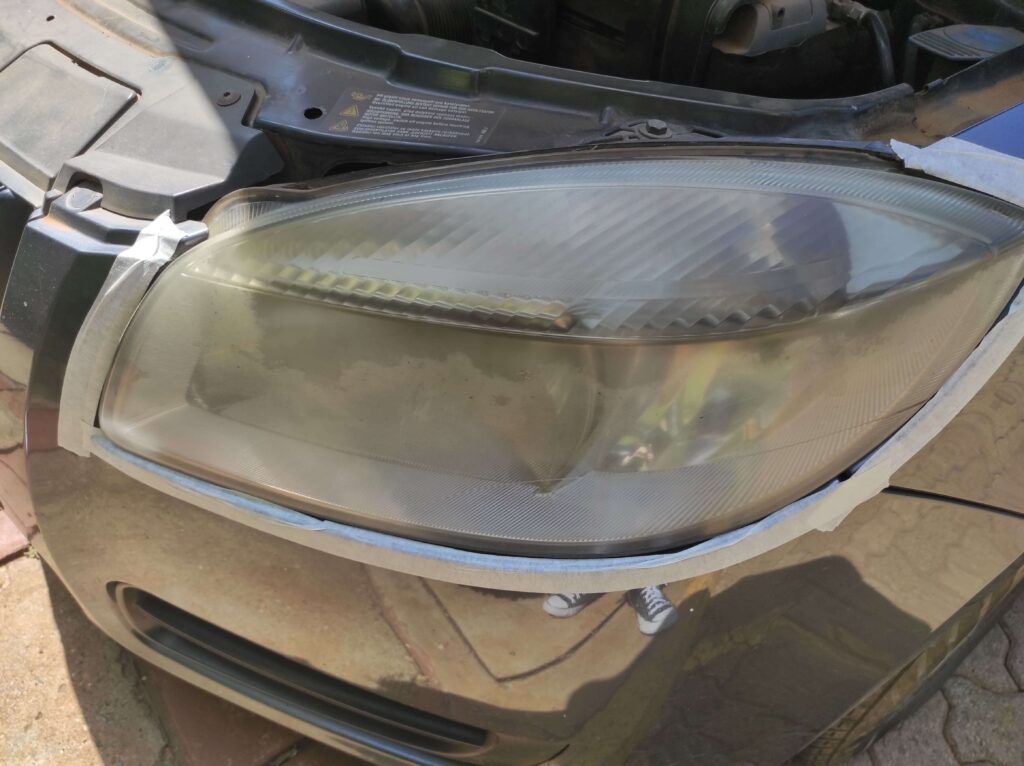
Before embarking on the headlight restoration process, it is crucial to assess the condition of your headlights. This section will guide you on how to identify signs of degraded headlights and the importance of documenting the condition with high-quality before photos.
Signs of Degraded Headlights
- Cloudiness and Haze: One of the most common signs of degraded headlights is the presence of cloudiness or haze on the headlight lenses. UV exposure, oxidation, and environmental factors gradually deteriorate the protective layer on the lenses, typically causing this cloudiness.
- Yellowing or Discoloration: Over time, headlights can develop a yellowish tint, diminishing their clarity and brightness. Yellowing is often a result of prolonged exposure to UV rays, which cause the plastic lenses to degrade and discolor.
- Diminished Light Output: If you notice a significant decrease in the brightness and range of your headlights, it could be an indication of degradation. Diminished light output can compromise your visibility on the road, making it essential to address the issue promptly.
- Scratches and Pitting: Scratches and pitting on the surface of the headlights can occur due to debris, road debris, or improper cleaning methods. These imperfections not only impact the appearance but also contribute to light scattering, reducing the effectiveness of the headlights.
Documentation with High-Quality Before Photos
Before starting the headlight restoration process, it is highly recommended to document the condition of your headlights with high-quality before photos. These photos serve as a visual reference and help you track the progress and effectiveness of the restoration. Here’s why it’s important:
- Comparison: By capturing the “before” state of your headlights, you can compare the initial condition with the final result after restoration. This allows you to appreciate the difference in clarity, brightness, and overall appearance.
- Evaluation: High-quality before photos enable you to evaluate the effectiveness of different restoration methods or products you may choose to use. You can objectively assess the impact of each step and determine the most suitable approach for your specific headlight condition.
- Documentation: Having documented evidence of the original state of your headlights can be valuable for insurance claims or the potential resale of your vehicle. It provides a clear record of the effort you have put into maintaining and restoring your headlights.
Remember to take well-lit and focused photos that clearly capture the condition of the headlights from various angles. These photos will serve as a visual testament to the transformation your headlights undergo during the restoration process.
In conclusion, assessing the condition of your headlights is an essential step before initiating the restoration process. By identifying signs of degradation and documenting the initial condition with high-quality before photos, you can effectively measure the improvement and track the success of your headlight restoration journey.
Headlight Restoration Techniques
When it comes to restoring your headlights and bringing back their clarity, there are several effective techniques you can choose from. In this section, we will explore three popular headlight restoration techniques: the sanding and polishing technique, headlight restoration kits, and professional restoration services. Each method offers its own advantages and considerations, allowing you to make an informed decision based on your specific needs.
Sanding and Polishing Technique
If you’re looking for a hands-on approach that allows you to actively participate in the restoration process, the sanding and polishing technique can be an excellent choice. This method involves removing the outer layer of the headlight lens through sanding and then polishing it to restore clarity. Here’s a step-by-step guide to help you through the process:

1. Gather the necessary materials and tools:
- Sandpaper (various grits, ranging from coarse to fine)
- Water for wet sanding
- Masking tape to protect the surrounding areas
- Automotive polishing compound
- Microfiber or polishing cloth
- Water spray bottle
2. Begin by cleaning the headlight surface to remove any dirt or debris. This will ensure a smooth sanding process.
3. Use the coarsest grit sandpaper to gently sand the headlight lens. Start with horizontal or vertical strokes, and gradually switch to circular motions. Keep the sandpaper wet throughout the process to prevent overheating and ensure a smooth sanding action.
4. As you progress, move on to finer grit sandpaper to refine the surface. Repeat the sanding process until the lens feels smooth and the majority of the imperfections are removed.
5. Once you’ve achieved the desired level of sanding, clean the lens again to remove any residue.
6. Apply a small amount of automotive polishing compound to a microfiber or polishing cloth. Work the compound into the lens using circular motions, applying moderate pressure. This step will help to remove any remaining scratches and restore clarity.
7. After polishing, wipe away any excess compound and inspect the results. If necessary, repeat the polishing process to achieve a pristine finish.
The sanding and polishing technique requires some patience and attention to detail, but it can be highly rewarding, especially for headlights with moderate to severe degradation.
Headlight Restoration Kits
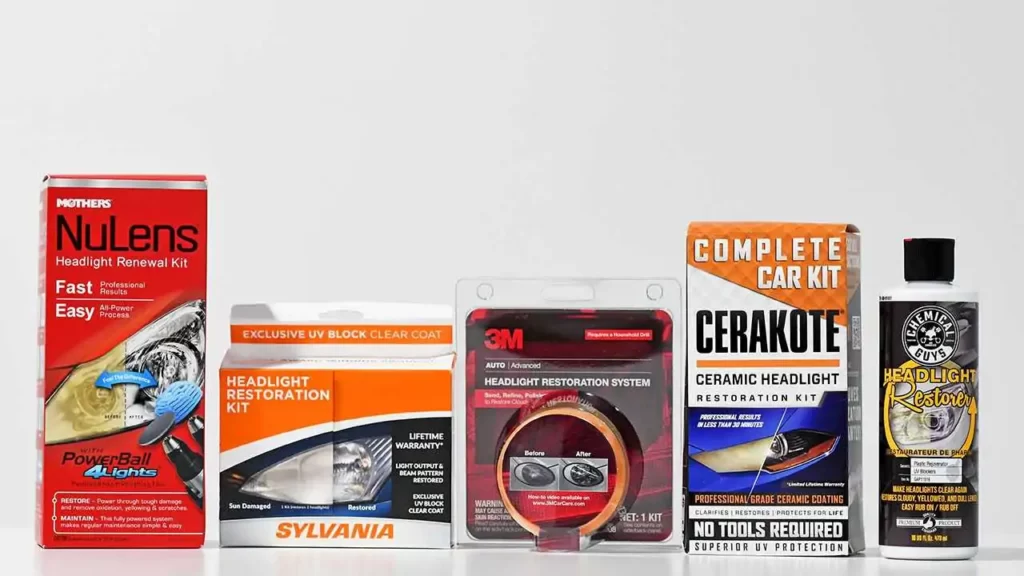
If you prefer a more convenient and user-friendly approach, headlight restoration kits can be an excellent option. These kits typically include all the necessary materials and step-by-step instructions to guide you through the restoration process. Here’s an overview of how to use a typical headlight restoration kit:
- Clean the headlight surface thoroughly to remove any dirt or grime.
- Follow the instructions provided with the kit to apply the cleaning solution or compound to the headlight lens. This solution is designed to remove oxidation and other surface imperfections.
- Use the included abrasive pad or sandpaper to gently scrub the lens, focusing on areas with more significant degradation. This step helps to smooth out the surface and prepare it for the next stage.
- Rinse the lens thoroughly with water to remove any residue from the cleaning solution and debris from the sanding process.
- Dry the headlight lens completely before moving on to the next step.
- Apply the provided protective coating or sealant to the lens. This coating helps to restore and maintain the clarity of the headlights over time.
Headlight restoration kits are designed to simplify the process and can deliver impressive results, even for headlights with significant degradation. Always follow the instructions provided with the kit for optimal results.
Professional Restoration Services
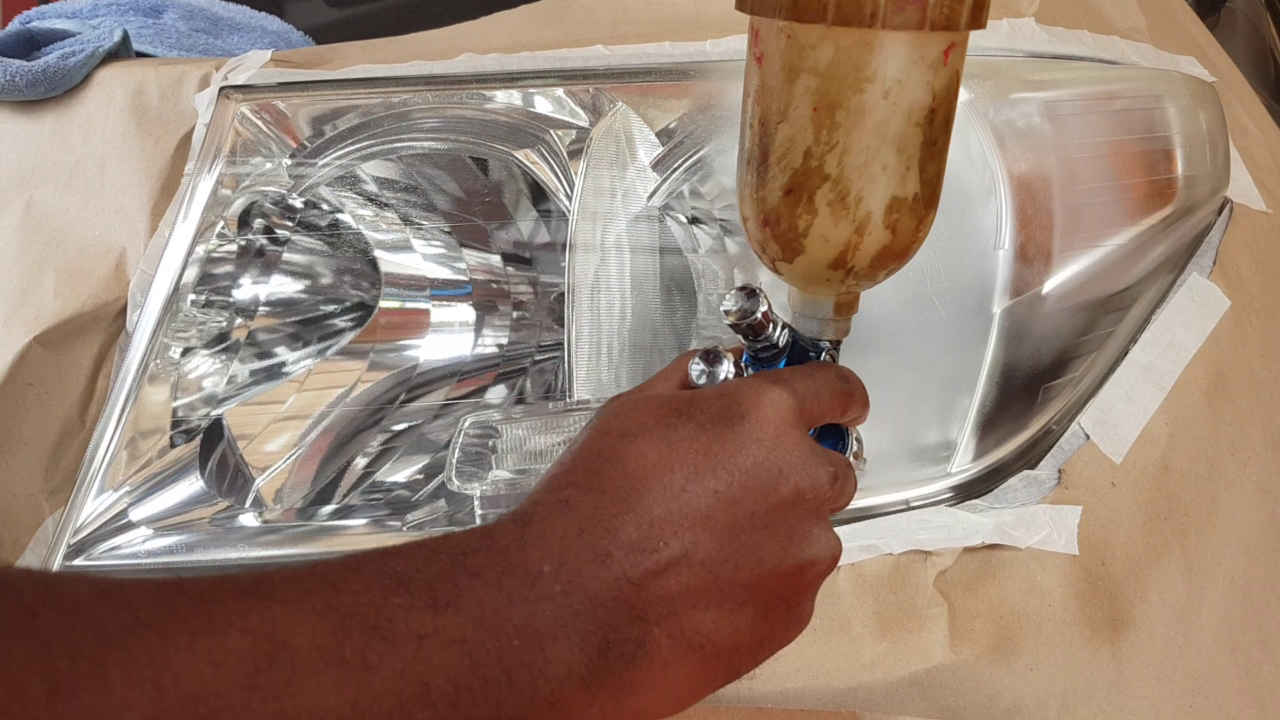
For those who prefer to leave the task to the experts or have severe headlight degradation, professional restoration services can provide the highest level of expertise and convenience. Opting for professional restoration offers the following benefits:
- Expertise and Experience: Professional technicians are trained in headlight restoration techniques and have extensive experience working with various types of headlights.
- Advanced Equipment and Products: Professionals have access to specialized tools, equipment, and high-quality products that can deliver superior results.
- Time and Convenience: By choosing professional services, you can save time and effort as the technicians take care of the entire restoration process for you.
- Long-lasting Results: Professionals can provide durable and long-lasting results, ensuring your headlights maintain their clarity for an extended period.
When opting for professional restoration services, you can expect the following steps to be performed:
- Assessment: The technician will assess the condition of your headlights to determine the most suitable restoration approach.
- Cleaning and Preparation: The headlights will be thoroughly cleaned to remove dirt and grime, preparing them for the restoration process.
- Restoration Techniques: Depending on the level of degradation, the technician may employ various techniques such as sanding, polishing, or using specialized restoration products.
- Final Touches: After the restoration process, the headlights will be inspected, and any necessary touch-ups or protective coatings will be applied to ensure the best possible outcome.
Professional restoration services provide a comprehensive solution for restoring your headlights, particularly if you’re seeking optimal results with minimal effort on your part.
Remember, whether you choose the sanding and polishing technique, a headlight restoration kit, or professional restoration services, always follow the instructions carefully and prioritize safety during the process.
Before and After Results
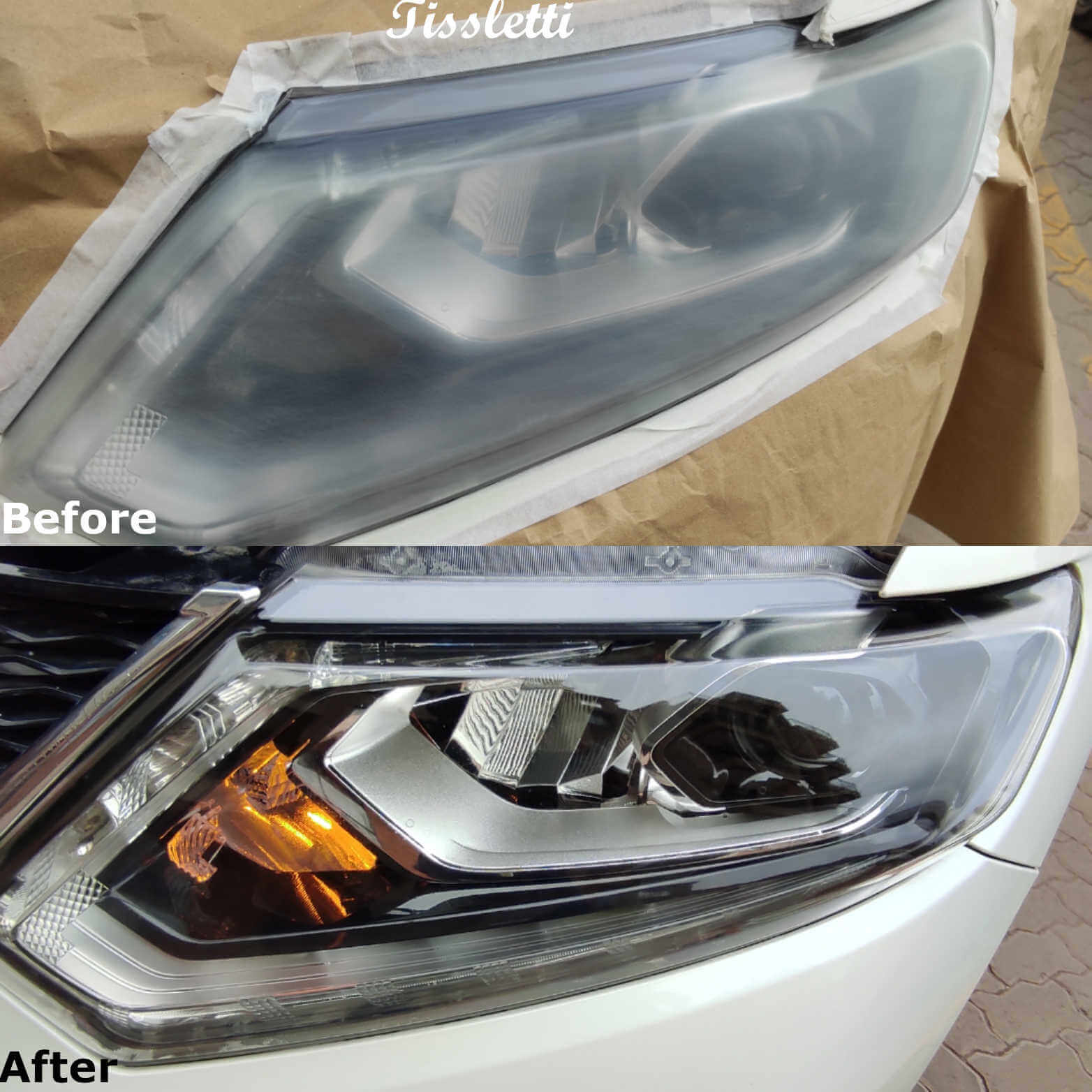
One of the most satisfying aspects of headlight restoration is witnessing the remarkable transformation from cloudy and degraded headlights to clear, bright, and rejuvenated ones. In this section, we will explore the before and after results of headlight restoration and highlight the visual improvements that can be achieved.
Assessing the Visual Improvements
After completing the headlight restoration process, you’ll notice a significant improvement in the overall appearance of your headlights. Here are some key visual enhancements you can expect:
- Clarity: The restoration techniques, whether it’s sanding and polishing, using a restoration kit, or professional services, aim to remove the hazy and yellowed layer from the headlight lens. As a result, the clarity of the lens is restored, allowing for better visibility and aesthetics.
- Brightness: With restored headlights, you’ll experience enhanced brightness on the road. The removal of oxidation and surface imperfections allows the headlights to emit light more effectively, improving your visibility and ensuring a safer driving experience.
- Uniformity: Over time, headlights can develop uneven degradation, with some areas being more affected than others. Headlight restoration addresses this issue, ensuring a uniform appearance across the lens surface. This creates a sleek and cohesive look for your vehicle.
Comparison with Before Photos

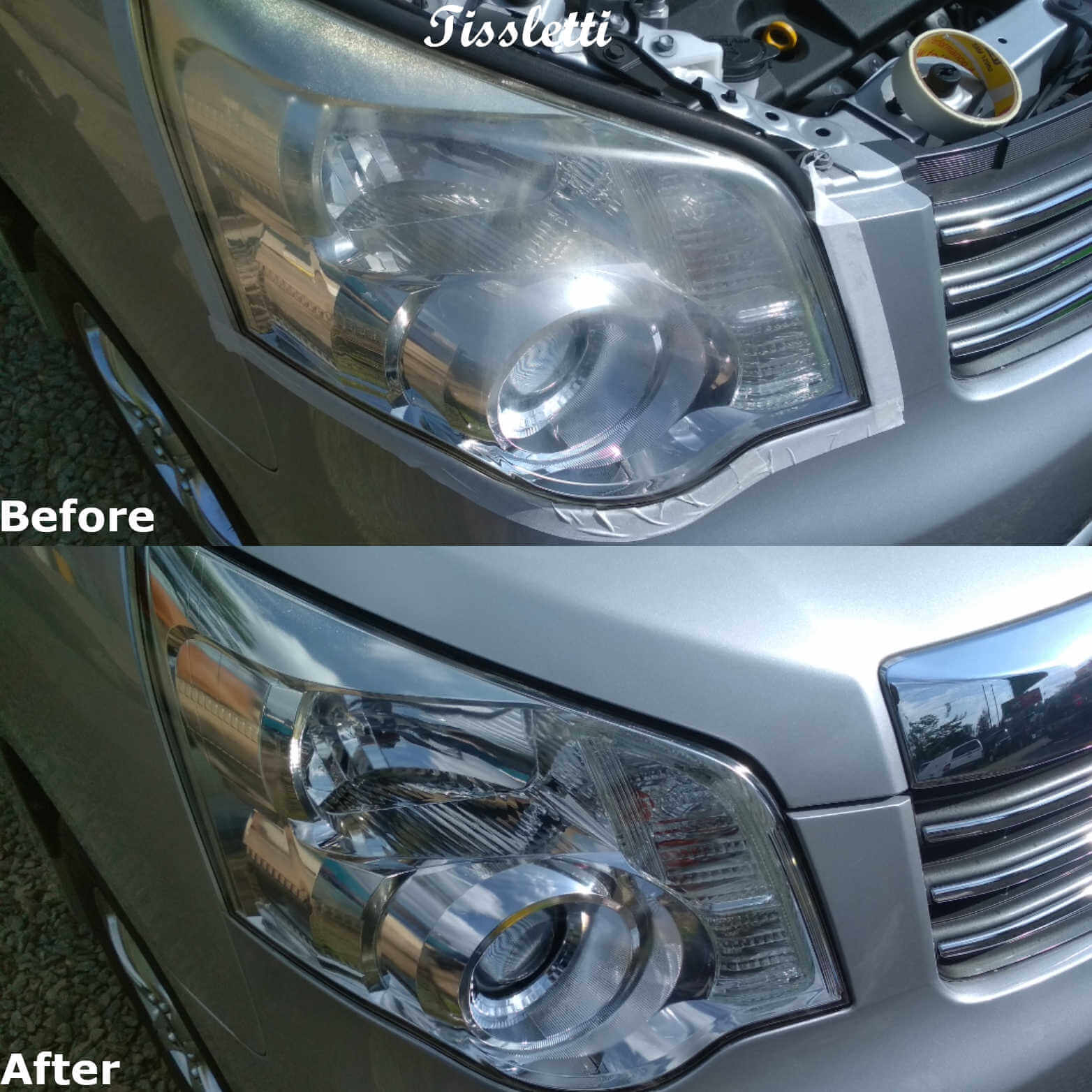
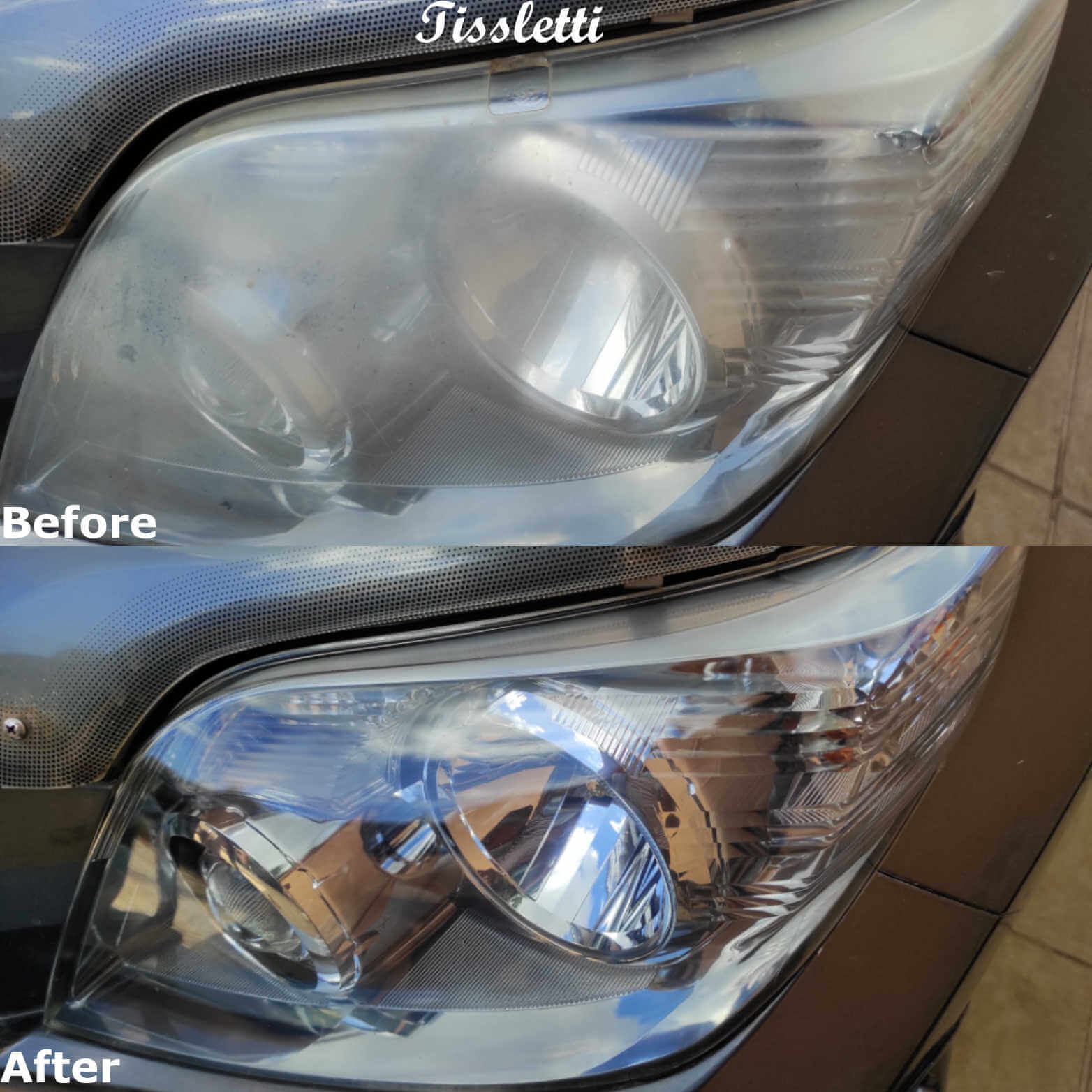
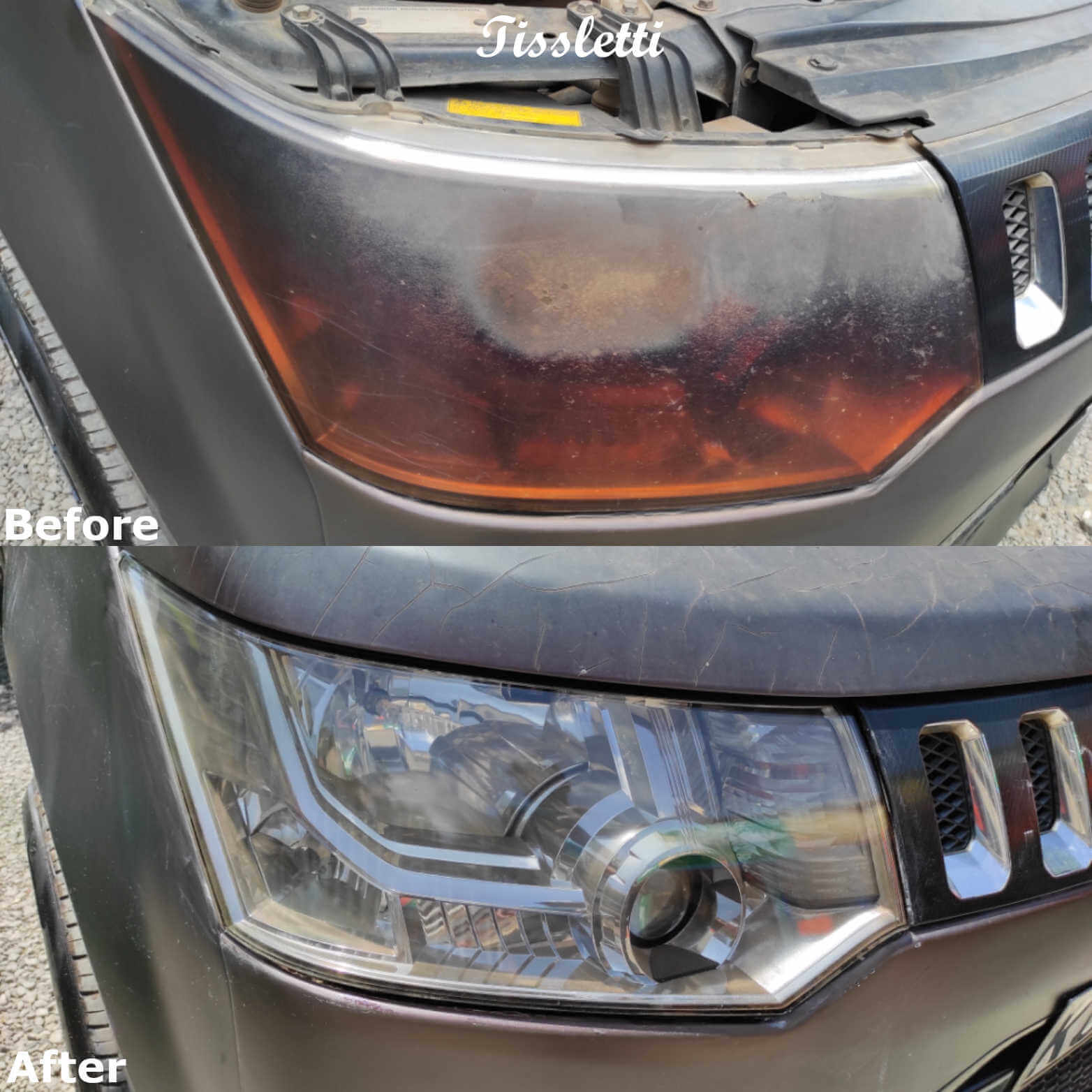
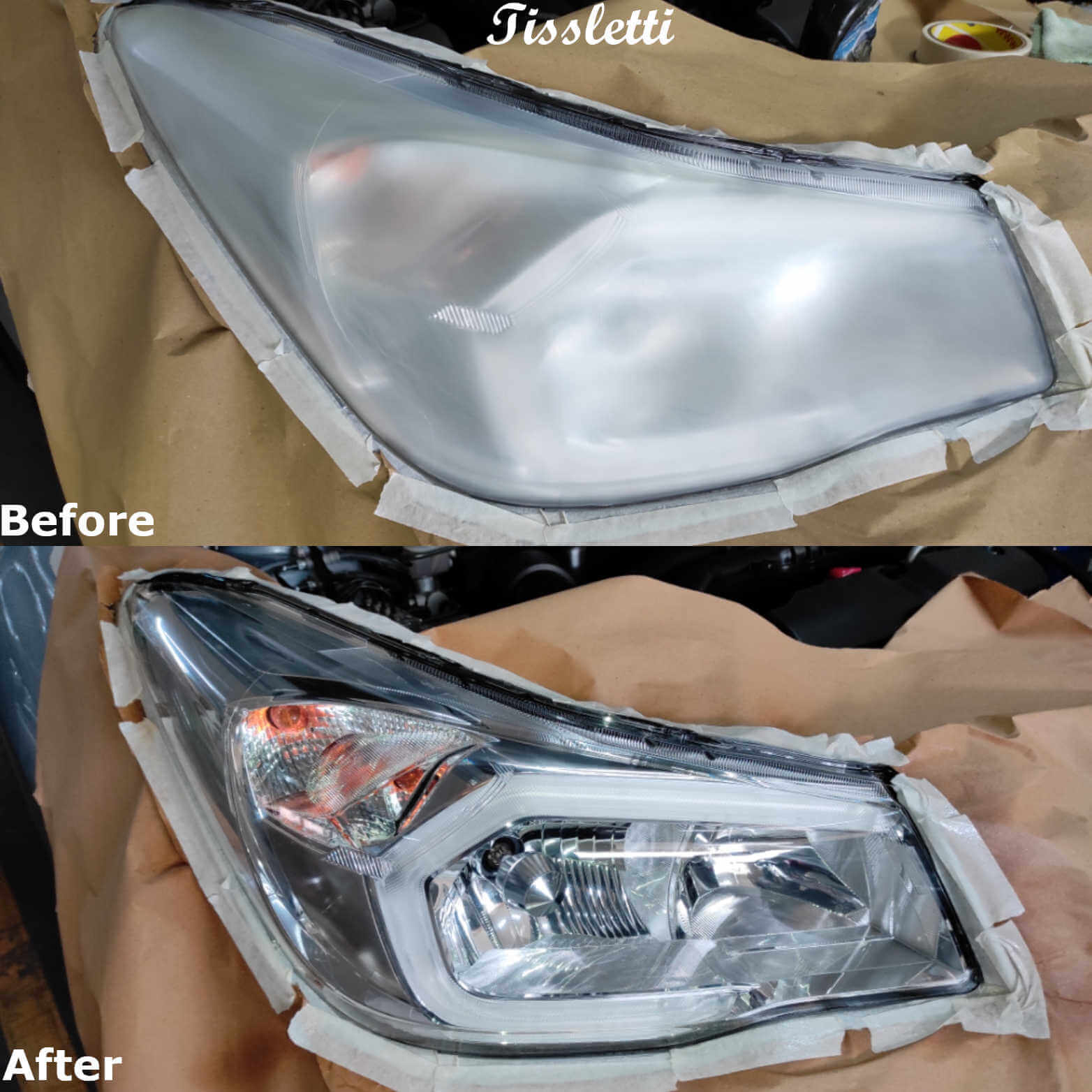
To truly appreciate the impact of headlight restoration, it’s recommended to document the condition of your headlights with high-quality before photos. By comparing the before and after images, you’ll witness the remarkable difference in clarity, brightness, and overall aesthetic appeal. The comparison acts as a visual testament to the effectiveness of the restoration process and reinforces the value of investing time and effort into restoring your headlights.
Increased Brightness and Clarity
Perhaps the most noticeable result of headlight restoration is the increased brightness and clarity that your headlights will exhibit. Once the restoration is complete, you’ll experience improved illumination on the road, allowing you to see potential hazards more clearly and react accordingly. This heightened visibility is crucial for night driving, inclement weather conditions, or when navigating poorly lit areas.
Restoring your headlights not only enhances the aesthetics of your vehicle but also contributes to your safety on the road. The before and after results demonstrate the power of headlight restoration in rejuvenating your headlights and bringing back their original shine.
Remember to regularly maintain your headlights and consider preventive measures, such as applying protective coatings, to prolong the results of the restoration process and keep your headlights looking their best for an extended period of time.
Maintaining Restored Headlights
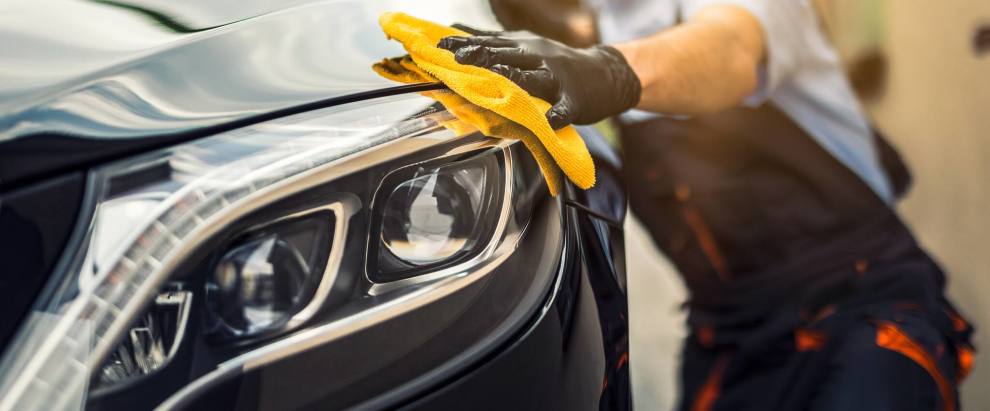
Once you have successfully restored your headlights and achieved their renewed clarity and shine, it’s important to maintain their condition to ensure long-lasting results. Proper maintenance practices and protective measures can help extend the lifespan of your restored headlights and keep them looking their best. Here are some valuable tips for maintaining restored headlights:
Regular Cleaning and Maintenance Practices
- Gentle Cleaning: Regularly clean your headlights to remove dirt, grime, and debris that can accumulate over time. Use a mild soap or automotive-specific headlight cleaning solution along with a soft microfiber cloth or sponge. Avoid using abrasive cleaners or rough materials that can scratch the lens surface.
- Proper Technique: When cleaning, use gentle circular motions to remove any stubborn residue. Pay special attention to the edges and corners of the headlights. Rinse thoroughly with clean water to remove any soap residue.
- Drying: After cleaning, ensure that the headlights are completely dry. Use a clean, dry microfiber cloth to remove any remaining moisture. This prevents water spots or streaks from forming on the lens.
Protective Measures Against Future Degradation
Apply a Protective Coating: Consider applying a protective coating or sealant specifically designed for headlights. These coatings act as a barrier against harmful UV rays, oxidation, and environmental factors that can cause degradation. Follow the manufacturer’s instructions for proper application and reapplication intervals.
- Waxing: Another option to protect your restored headlights is to apply automotive wax. The wax creates a protective layer on the surface, shielding the headlights from UV damage and preserving their clarity. Apply the wax according to the product instructions and reapply as needed.
- Parking Considerations: Whenever possible, park your vehicle in a shaded area or use a car cover to minimize direct exposure to sunlight. This reduces the risk of UV damage and helps maintain the longevity of your restored headlights.
- Avoid Harsh Chemicals: Be cautious when using cleaning products near your headlights. Avoid using strong solvents, abrasive chemicals, or ammonia-based cleaners, as they can damage the lens and degrade the restoration work.
By implementing these maintenance practices and protective measures, you can prolong the life of your restored headlights and preserve their clarity and shine. Regular cleaning and proactive care will ensure that your headlights continue to provide optimal visibility and enhance the overall appearance of your vehicle.
Remember to periodically assess the condition of your headlights and address any signs of degradation promptly. Should you notice any significant deterioration, consider reapplying the restoration techniques or seeking professional assistance to maintain the desired results. With proper maintenance, your restored headlights will continue to shine brightly for miles to come.
Common FAQs about Headlight Restoration
As you consider restoring your headlights for improved clarity and safety, you may have some common questions in mind. In this section, we address these frequently asked questions to provide you with the information you need to make informed decisions about headlight restoration.
By addressing these frequently asked questions, we hope to have provided you with valuable insights into the world of headlight restoration. If you have further inquiries or concerns, it’s always recommended to consult with a professional restoration service provider or refer to the specific instructions and guidelines provided with your restoration kit.
Conclusion
As we reach the end of our exploration into headlight restoration, it’s important to recap the significance and advantages of this process. By restoring your headlights, you can experience a multitude of benefits that enhance both safety and aesthetics. Let’s summarize what we’ve learned and encourage you to take action:
- Improved Safety: Headlight restoration plays a crucial role in enhancing visibility on the road. By removing the haze, cloudiness, and oxidation from your headlights, you can improve your ability to see and be seen, especially during nighttime driving or in adverse weather conditions. This, in turn, contributes to safer journeys for you and your passengers.
- Enhanced Aesthetics: Over time, headlights can become dull, yellowed, or discolored, detracting from the overall appearance of your vehicle. By restoring their clarity and transparency, you can bring back the shine and rejuvenate the look of your car. Aesthetically pleasing headlights not only make your vehicle more appealing but also contribute to its value and curb appeal.
- Cost-Effective Solution: Headlight restoration offers a cost-effective alternative to headlight replacement. Restoring your existing headlights is generally more affordable than purchasing new ones, making it an economical choice without compromising on quality or results.
With the importance of headlight restoration in mind, we encourage you to take action and restore your headlights. By investing a little time and effort, you can reap the rewards of improved safety, enhanced aesthetics, and cost savings.
Whether you embark on a DIY restoration project or seek professional assistance, restoring your headlights is a worthwhile endeavor that can significantly impact your driving experience. Remember, clear and bright headlights not only contribute to your own safety but also to the safety of those around you.
By restoring your headlights today, you are taking the first step towards better visibility, increased safety, and a more appealing vehicle. Don’t wait any longer; restore and rediscover the brilliance of your headlights!